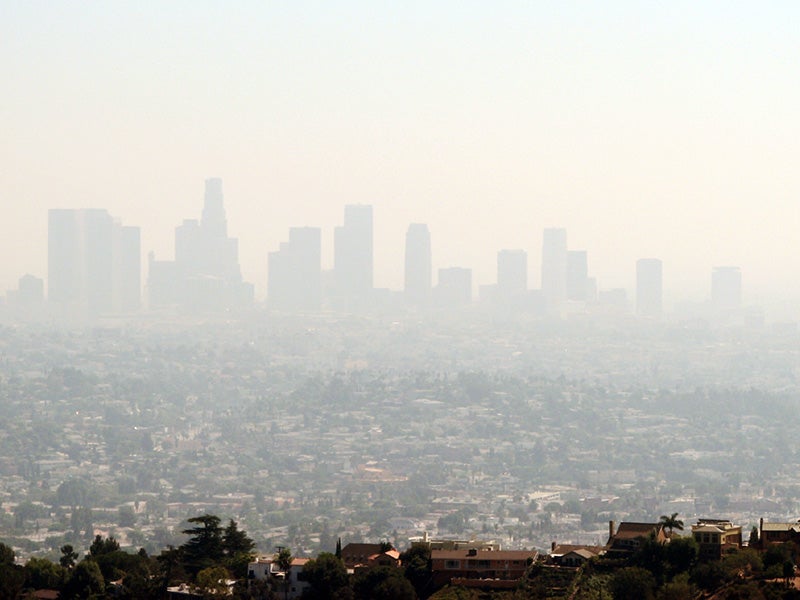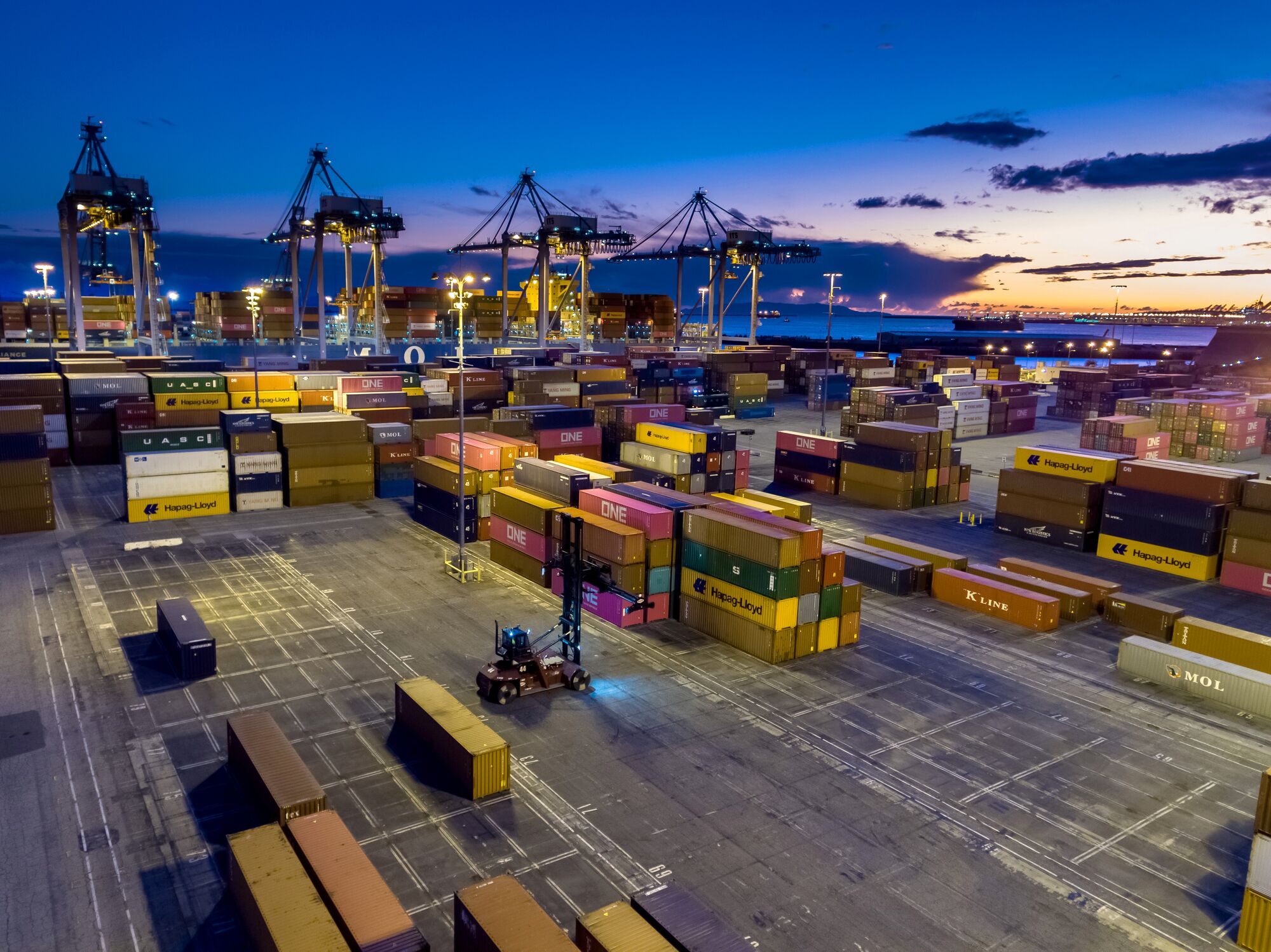It’s Electrifying! Helping Ports Bring Us Goods, Not Smog
A firehose of funding from California regulators will help the Port of Long Beach step into an electric future.
Each year Americans import hundreds of billions of dollars’ worth of goods shipped from overseas — shoes, cars, clothing, machinery, and on and on. Wouldn’t it be nice if all those goodies didn’t come through our ports with a bonus order of toxic air pollution?
They can, and California just took a big step toward making it happen with a major investment aimed at curbing lung- and climate-damaging pollution from its ports. A major infusion of new funding will enable those ports to replace dirty diesel locomotives, forklifts, and other polluting equipment with zero-emissions electric units. A serious chunk of that funding, from the California State Transportation Agency or CalSTA, will go to electrify the Port of Long Beach — the second largest port in the U.S.

An aerial shot of a shipping yard at the Port of Long Beach, California. (halbergman / Getty Images)
Earthjustice worked with a large coalition of community and environmental groups to support the zero-emission components of the Port of Long Beach’s proposal, known as the System-Wide Investments in Freight Transport, or SWIFT. CalSTA is also funding major projects at other busy California ports, including Los Angeles (the busiest port in the nation) and Oakland (ninth busiest in the nation).
If you live in Southern California and breathe air, this matters. The American Lung Association’s annual “State of the Air” report regularly gives Los Angeles County and other SoCal counties an “F” grade for both ozone and particle pollution. While for decades California has led the way in reducing smog from cars, we haven’t done enough to clean up our ports, and the Ports of L.A. and Long Beach remain the largest fixed sources of smog in the L.A. basin.

Smog covers the city of Los Angeles. (Photo courtesy of Ben Amstutz)
Right now, nearly every piece of machinery that unloads all those refrigerators, smartphones, and bushels of food and gets them ready to ship to stores — from forklifts and top handlers that move containers around the port, to the locomotives that send the merchandise across the state and country — operates on dirty diesel power. Those diesel engines belch particulates and all sorts of noxious junk into our air, including a kind of air pollution that can cross the blood-brain barrier to the detriment of our health, and a whole lot of carbon dioxide that can destabilize our climate.
In Long Beach, that diesel combustion-centric approach will now change because of the zero-emission components of SWIFT. And it took healthy partnership with local community groups and discerning policy leadership from key regulators in California to get here. In a fresh turn of events, the Port of Long Beach engaged community groups and environmental groups early in the process of developing its proposal, and they received the largest grant of any applicant (the next highest recipient — the Port of Los Angeles — will receive about $150 million less in funding). The Port of Oakland failed to engage the nearby community and largely ignored concerns that aspects of its proposal would increase air pollution, and it ended up with less than half of what it requested. In other words, inclusive and authentic public engagement literally pays.
In our meeting with the Port of Long Beach, we urged the electrification of locomotives at the port, an idea initially missing from the proposal. The Port of Long Beach adopted the recommendation on rail, which will now receive $50 million in funding for a zero emissions transformation.
The project will bring immense health and economic benefits to the communities surrounding the port. CalSTA estimates that by 2028, SWIFT will have taken over 2,000 tons of carbon monoxide, nitrogen oxide, particulates, and other harmful pollutants out of the air, plus 255,000 tons of CO2 that those diesel engines would have spewed into the atmosphere.
That last figure seems particularly important as we look around the U.S. and see the accelerating effects of climate change. In June, New Yorkers choked on an abnormal influx of Canadian wildfire smoke while a record-breaking heat strained the electrical grid in Texas and sent waves of people into emergency rooms. At the same time, the Northeast endured record-setting rain leading to devastating floods that cut off Vermont’s state capital from the rest of the state. Here in California, towns are white-knuckling it through yet another historic heatwave and bracing for the coming wildfire season.

The Camp Fire — the deadliest and most destructive wildfire in California history — as seen from the Landsat 8 satellite on Nov. 8, 2018. (Joshua Stevens / NASA)
Worldwide shipping accounts for nearly 3% of greenhouse gas emissions — and shifting our ports to zero emissions everything is a major part of the solution. No one project can clean our air or solve climate change all by itself, but the Port of Long Beach is about to take a major step toward a cleaner, healthier future, and working with surrounding communities to develop and implement proposals to clean our air will be key to its success. I hope other port authorities can learn the lesson to engage communities on the front line early and often.
The California Regional Office fights for the rights of all to a healthy environment regardless of where in the state they live; we fight to protect the magnificent natural spaces and wildlife found in California; and we fight to transition California to a zero-emissions future where cars, trucks, buildings, and power plants run on clean energy, not fossil fuels.
